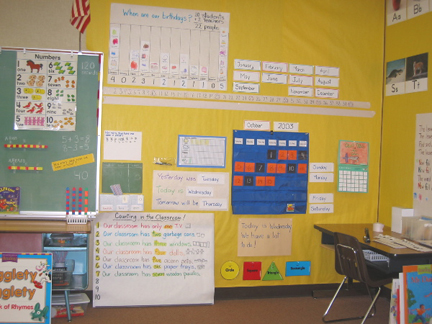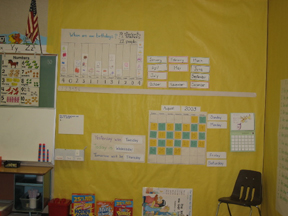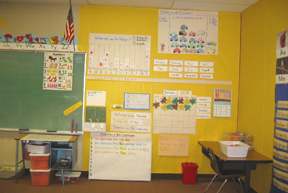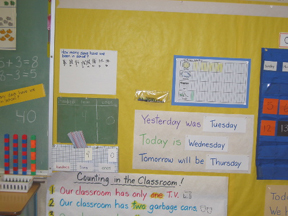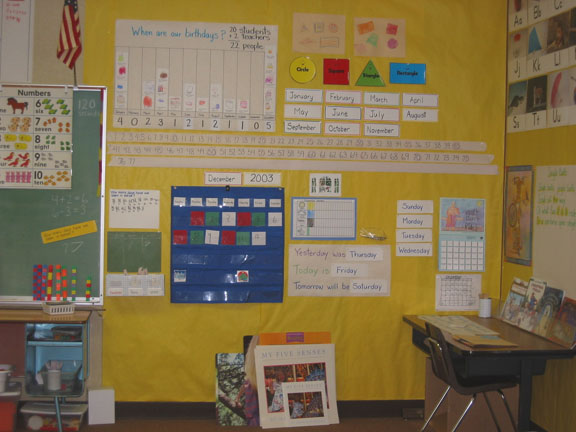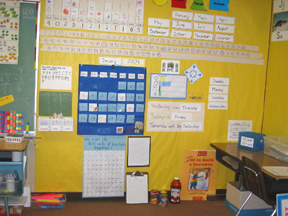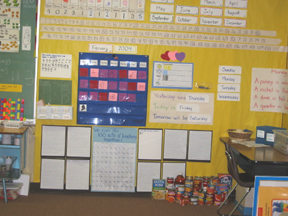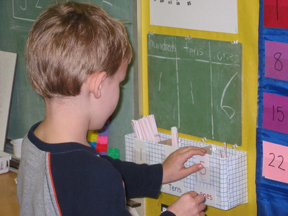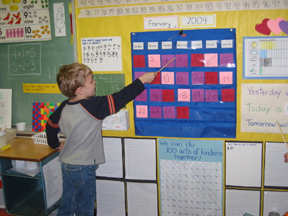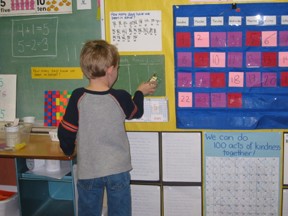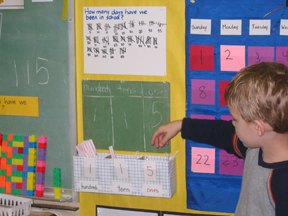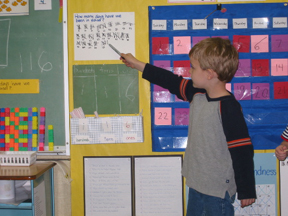Renee Goularte's Kindergarten Classroom Tour
Here is the calendar wall, where most of our math work takes place. We start the day here every day, reviewing the pattern, counting the days with straws, linker cubes, and tallies, singing the months and the days of the week, and graphing the weather. Above the calendar is our birthday graph which stays on this wall all year.
Everything isn't introduced right away so the calendar area is simpler at the beginning of the year. You can tell it's October here because the ABB pattern for the days is done with Halloween colors.
